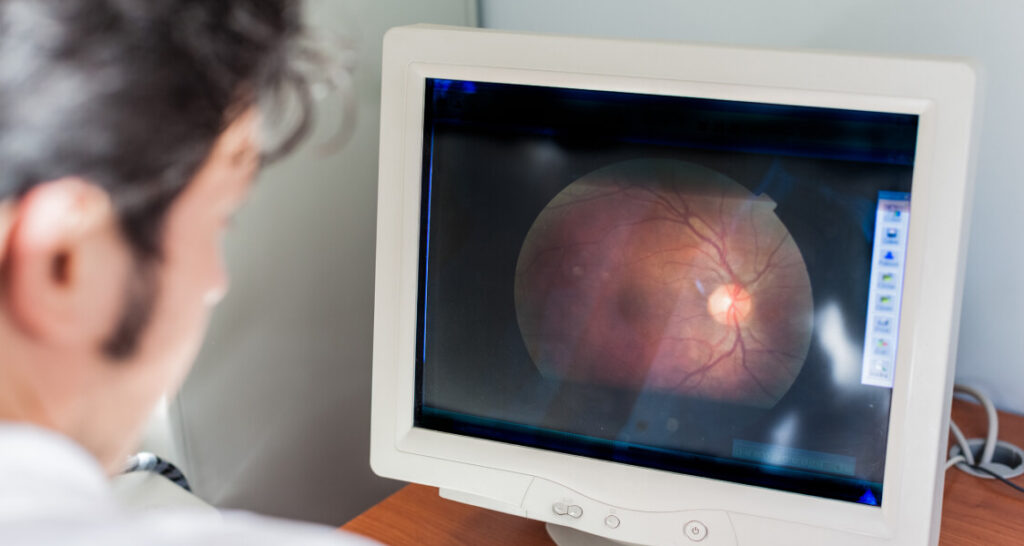Your eyes deserve the best care possible. At Simpson Optometrists, we offer state-of-the-art Retinal Imaging as part of our comprehensive eye exams, ensuring your eye health is monitored with precision.
What is Retinal Imaging?
Retinal Imaging is a non-invasive technology that captures high-resolution images of the back of your eye, including the retina, optic nerve, and blood vessels. These detailed images provide our optometrists with valuable information to monitor your eye health and detect signs of eye conditions early on.
Why is Retinal Imaging Important?
By capturing these images during your exam, our optometrists can spot changes that might otherwise go unnoticed, giving you the best chance to manage or treat any potential issues.
How Does Retinal Imaging Work?
The process is quick, painless, and involves no direct contact with your eye. Using advanced digital technology, we take a detailed image of your retina. This allows us to see what’s happening beneath the surface of your eye, providing a more comprehensive view of your eye health compared to traditional methods.


Retinal Imaging vs. OCT: What’s the Difference?
While Retinal Imaging provides high-quality images of the retina and optic nerve, OCT (Optical Coherence Tomography) offers a more detailed, 3D view of the deeper layers of the retina. OCT is typically recommended for patients at higher risk of certain conditions or those requiring a more in-depth analysis of their eye health.
Schedule Your Retinal Imaging Exam Today!
Stay proactive about your eye health by booking a comprehensive eye exam that includes retinal imaging. Contact Simpson Optometrists today to schedule your appointment and ensure your vision stays clear and healthy for years to come.







